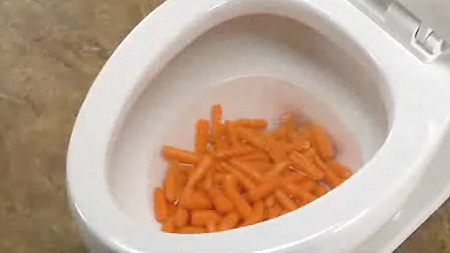Can One to Dispose of Food Waste in the Toilet?
Can One to Dispose of Food Waste in the Toilet?
Blog Article
They are making a number of good annotation related to Is it safe to flush food (especially rice) down the toilet? overall in this post just below.

Introduction
Lots of people are typically confronted with the issue of what to do with food waste, especially when it pertains to leftovers or scraps. One common inquiry that develops is whether it's fine to purge food down the toilet. In this short article, we'll explore the reasons why people could think about flushing food, the repercussions of doing so, and alternate approaches for appropriate disposal.
Reasons that people might consider flushing food
Lack of recognition
Some individuals may not be aware of the possible damage brought on by flushing food down the bathroom. They might wrongly think that it's a harmless practice.
Ease
Flushing food down the bathroom may look like a fast and very easy solution to throwing away unwanted scraps, especially when there's no nearby garbage can readily available.
Negligence
Sometimes, individuals might just pick to flush food out of sheer idleness, without considering the repercussions of their actions.
Effects of flushing food down the commode
Ecological impact
Food waste that winds up in waterways can add to pollution and harm aquatic ecological communities. Additionally, the water made use of to flush food can strain water resources.
Pipes concerns
Flushing food can result in clogged pipelines and drains, causing expensive plumbing repairs and hassles.
Sorts of food that must not be purged
Coarse foods
Foods with fibrous textures such as celery or corn husks can obtain tangled in pipes and cause obstructions.
Starchy foods
Starchy foods like pasta and rice can soak up water and swell, causing clogs in pipelines.
Oils and fats
Greasy foods like bacon or cooking oils should never be purged down the commode as they can solidify and create clogs.
Correct disposal approaches for food waste
Using a garbage disposal
For homes outfitted with garbage disposals, food scraps can be ground up and flushed through the pipes system. Nonetheless, not all foods appropriate for disposal in this way.
Recycling
Specific food packaging products can be recycled, minimizing waste and decreasing ecological influence.
Composting
Composting is an environmentally friendly method to deal with food waste. Organic materials can be composted and made use of to improve soil for gardening.
The value of correct waste monitoring
Reducing ecological damage
Appropriate waste management methods, such as composting and recycling, assistance decrease air pollution and maintain natural deposits for future generations.
Shielding plumbing systems
By staying clear of the practice of flushing food down the bathroom, homeowners can avoid expensive plumbing repair services and maintain the integrity of their pipes systems.
Conclusion
In conclusion, while it might be alluring to flush food down the commode for comfort, it's important to understand the prospective repercussions of this activity. By taking on proper waste administration techniques and throwing away food waste responsibly, people can contribute to healthier plumbing systems and a cleaner environment for all.
FLUSH FOOD DOWN THE TOILET?
FLUSHING FOOD CAN CAUSE BLOCKED DRAINS IN YOUR HOME
All of the plumbing fixtures in your home are connected to the same sewer pipe outside of your home. This outdoor sewer pipe is responsible for transporting all the wastewater from your home to the Council sewer mains. Even small pieces of food that go down the kitchen sink can cause problems for your sewer. It should therefore be obvious that flushing larger bits of food, such as meat, risks a clog in either the toilet itself or the sewer pipes. Flushing greasy food is even more problematic because oil coagulates when it cools, coating the interior lining of your pipes.
THE TOILET IS NOT A BIN
Food isn’t the only thing that people shouldn’t be flushing down the toilet. People use the toilet to dispose of all kinds of things such as tampons, makeup wipes, dental floss, kitty litter and even underwear. Water goes to great lengths to educate residents about the high costs and stress placed on wastewater treatment systems simply from people flushing the wrong stuff down the toilet. It costs taxpayers millions of dollars each year, and homeowners thousands in blocked drain repairs.
FLUSHING FOOD IS A WASTE OF WATER
Flushing food is a waste of our most precious resource - water. In June this year Level 1 water restrictions were introduced to protect water supply from drought conditions. Much of New South Wales continues to be affected by prolonged drought with recent figures revealing up to 97 per cent of the state remains in drought. Depending on whether you have a single or dual flush toilet, every single flush uses between five and 11 litres of water. In the current climate this is a huge amount of water to be wasting on flushing food that should be placed in the bin (or better yet, the compost).
https://www.jabplumbingsolutions.com.au/blog/can-you-flush-food-down-the-toilet

I hope you liked our article about Think Twice Before Flushing Food Down Your Toilet. Thanks so much for taking the time to browse our posting. Liked our entry? Please quickly share it. Let other people locate it. We appreciate your readership.
Click Here Report this page